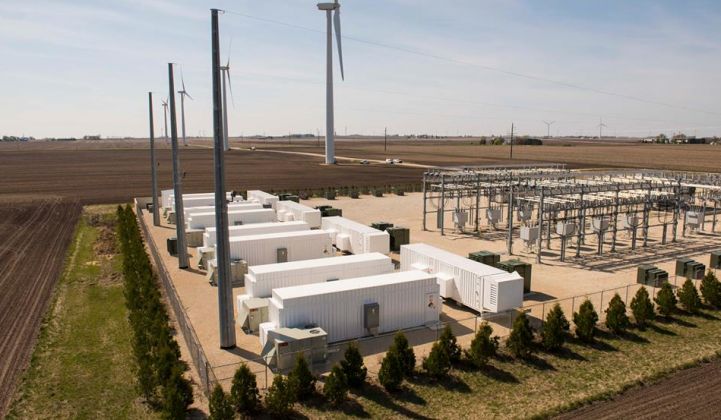Florida Power & Light, the utility owned by NextEra Energy, said it plans to build a 409-megawatt energy storage project to be powered by utility-scale solar, among the largest battery systems announced to date in the U.S.
Expected to be up and running by late 2021, the FPL Manatee Energy Storage Center will be a landmark project for the storage sector, four times the size of the world’s largest battery system currently in operation, FPL said in a statement.
It's the largest battery project unveiled so far in the U.S. on a megawatt basis, and among the largest on a megawatt-hour basis, said Wood Mackenzie senior storage analyst Dan Finn-Foley.
The Manatee Energy Storage Center will have the ability to distribute 900 megawatt-hours of electricity, enough to power 329,000 homes for 2 hours. The facility will be charged by an existing FPL solar plant in Manatee County in southwest Florida, and will help the utility accelerate the retirement of two 1970s-era natural-gas-fired plants.
The project underscores FPL's recent embrace of large-scale solar and storage in the Sunshine State — following the aggressive lead of its sister company NextEra Energy Resources, which is active across the continent as North America’s leading renewables developer.
The Manatee project is part of a wider modernization plan for FPL as it looks to leverage NextEra's experience with large-scale renewables and storage in other parts of the country to decarbonize its generation fleet in Florida. Replacing the two gas-fired plants with a combination of solar arrays, battery installations and upgrades to combustion turbines at other power plants will save consumers $100 million over time, the utility said.
Gigawatt-scale solar-plus-storage facilities are quickly becoming the "new norm," following similar announcements out of Arizona and Puerto Rico this year, Finn-Foley said.
"Based on what we are seeing out of Arizona, Florida, Puerto Rico and Hawaii, you can draw a line across the sunniest parts of the U.S. and find where solar-plus-storage has begun to outcompete natural-gas peakers," he said. "As battery costs continue to drop and incentives are rolled out, expect that line to creep farther and farther north."
FPL's plan amounts to “replacing a large, aging fossil fuel plant with a mega battery that’s adjacent to a large solar plant,” said Eric Silagy, president and CEO of FPL, Florida's largest utility.
While Florida has been something of a laggard in renewables despite its rich solar resource, FPL has set out at a brisk pace to change that recently. Earlier this year, the utility announced it will install 30 million solar panels by 2030 — a target that could amount to more than 10 gigawatts of capacity, or roughly five times the state’s installed solar base today.
A year ago, parent company NextEra announced a four-year supply deal with Chinese solar manufacturer JinkoSolar for nearly 3 gigawatts of modules, to be made at Jinko’s new factory in Jacksonville, Florida.
A number of U.S. investor-owned utility groups own unregulated power-generation arms active in various renewables markets across the country, among them Duke Energy and Avangrid. But none compares to NextEra’s Energy Resources unit — by far the largest owner of wind capacity in North America, and now a major player in solar as well.
NextEra Energy Resources’ near-term investment plans call for building nearly 7 gigawatts of renewables capacity in the 2019-2020 timeframe, including more than 5 gigawatts of wind, as it takes advantage of fading federal subsidies.
More than 40 percent of the solar projects Energy Resources added to its project backlog in 2018 included a battery component, with NextEra Energy CEO James Robo trumpeting that “the next phase of renewables development” is pairing low-cost wind and solar with storage during the company's most recent earnings call.




